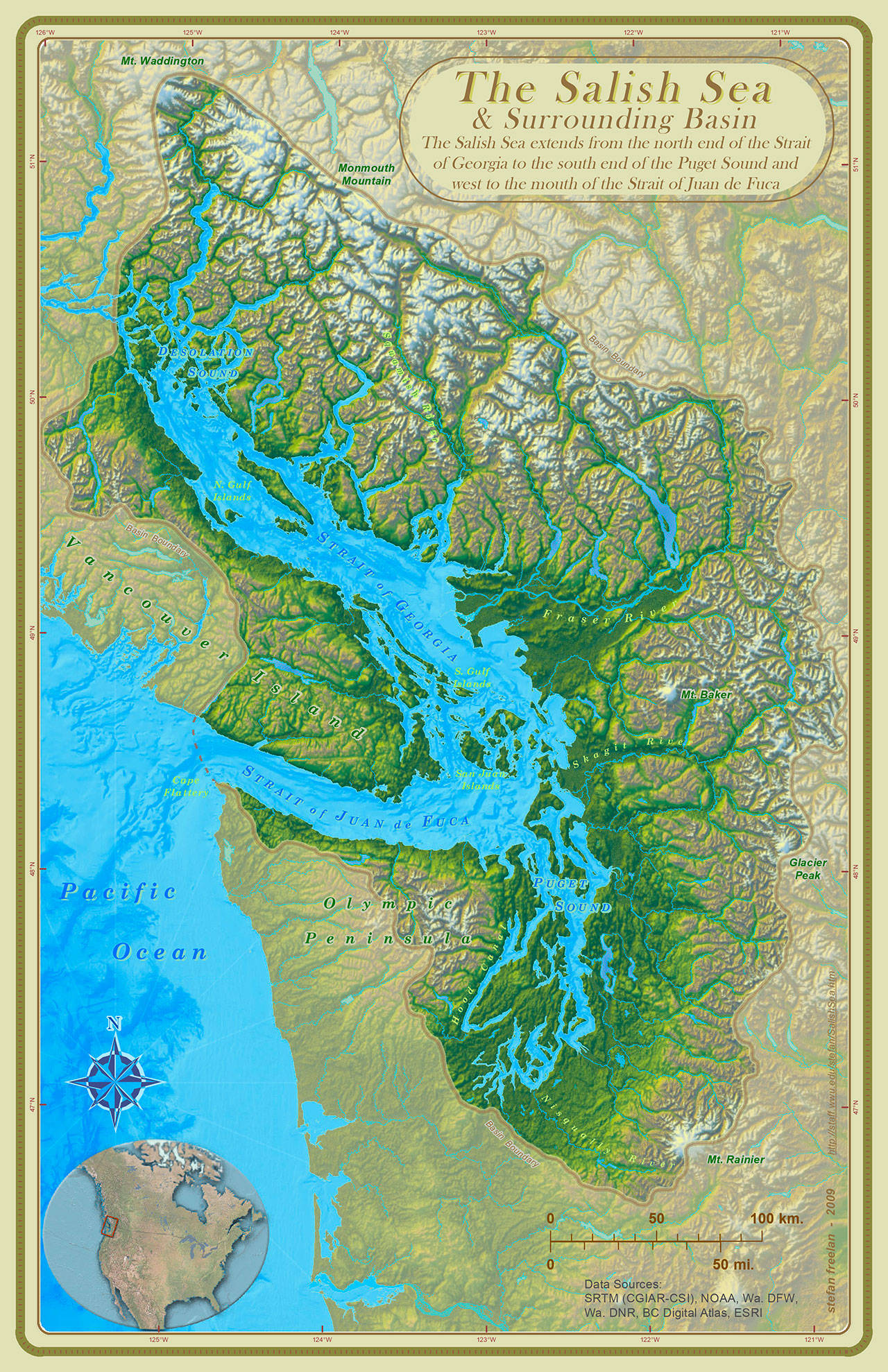By CHRIS WOODS
The Salish Sea is the name given to the inland marine waters of Washington and British Columbia. The designation acknowledges that this body of water is connected as a single estuary — an ecosystem transcending political boundaries.
Every two years, scientists, First Nations representatives, policy makers and others gather at the Salish Sea Ecosystem Conference to share research and conservation initiatives.
This is an intensive scientific conference, and although Vashon looks small on the Salish Sea map, our island has significant representation. Past and current Vashon presenters include Patrick Christie, who studies society and marine conservation at UW, Tessa Francis, a specialist in Pacific herring at the Puget Sound Institute, and Jeff Adams, who works for Washington Sea Grant.
This year, Bianca Perla, founder and director of the Vashon Nature Center (VNC), is looking forward to giving her second presentation at the conference.
“It’s a meeting of the minds representing the cutting edge of everyone working toward keeping the Salish Sea ecosystem healthy and more functioning. We get to see the shared themes that connect everything,” she said.
Perla’s session is on citizen science programs that use volunteers to collect data for environmental research and conservation. She will be sharing her research on several VNC citizen science programs on Vashon, including the Salmonwatchers monitoring program, the Stream Invertebrate program tracking the health of our creeks, and the BeachNET survey that documents forage fish spawning and beach recovery following bulkhead removals.
She will talk about the challenges of creating robust citizen science programs, including: maintaining long-term sustainability, ensuring the quality of volunteer training, managing the data, establishing scientific credibility and communicating the projects’ effectiveness to resource managers, funding organizations and the public.
Perla has found several factors critical to successful citizen science programs: strong local leadership and organization of volunteers, a common vision and goals shared among all participants, and getting resource managers and scientists involved in the creation of citizen science projects as well as the volunteer training process. Finally, she advocates creating public forums that engage with the community like the Science Pub talks and school-based TED talks VNC conducts on Vashon.
Citizen science is gaining momentum as a tool to help scientists gather and connect large data sets. Data collected by VNC’s BeachNET is being compiled with that from other locations around Puget Sound to create a view of the larger ecosystem. According to Perla, “New techniques are being employed on a scale than has not been possible previously.”
Perla also emphasizes that citizen science can help communities collaborate toward common goals.
“It helps people cooperate and learn together, which can be a much more effective way of protecting the environment than trying to enact regulations,” she said.
Science professionals studying different aspects of the same question inspires Perla.
“So many people are putting their minds toward solving the problems of the Salish Sea. We have this chance to learn from each other, and it’s really heartening for me to see how much is going on and how it’s all connected,” she said.


